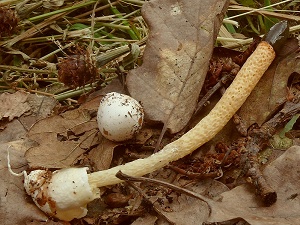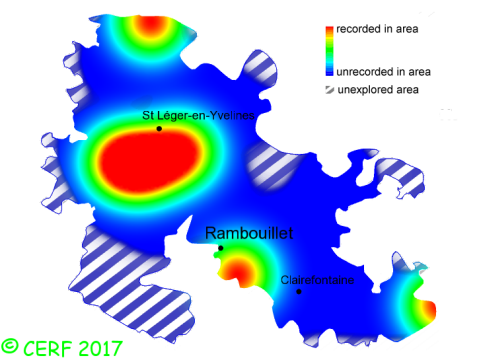| Mutinus caninus (Huds.:Fr.) Fr. |
|
|
|
|
|
|
The cap is white egg-shaped at first, from which then emerges a stem topped by a cone-shaped honeycombed head truncated by a small hole, covered with a gelatinous brown-olive layer, which later disappears to leave only a reddish head, with a well differentiated stem. The flesh is white, fragile and brittle; its taste is pleasant; the odour is fecal, but not strong. The fertile surface is composed of a dark olive slime. The spore print is olive green.It grows on the ground, in broad-leaved (sometimes coniferous) woods, also in parks, near stumps, on a rather acid soil, mostly with beech and oaks. The fruiting period takes place from July to December.
Chemical tests : none. Distinctive features : sorry, no English description yet Mutinus caninus is quite rare and localised in the forest of Rambouillet, and is occasional, more generally speaking . | ||
|
page updated on 14/01/18

